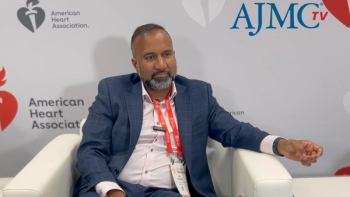
TP53 Mutations Remain Important Research Focus in Cancer
Key Takeaways
- TP53 mutations are crucial in cancer development and treatment response, influenced by genetic and environmental factors.
- In CLL and AML, TP53 serves as a significant prognostic marker, affecting treatment planning and outcomes.
TP53 mutations can have a significant impact on the prognosis of diseases like chronic lymphocytic leukemia, but their effect can vary based on numerous factors.
Mutations of TP53 play a critical role in the development of cancer and in treatment response, but a new review notes that such mutations must be interpreted alongside a web of genetic and environmental factors that shape their effect.
The review highlights how the growing body of research into TP53 has affected scientists’ understanding of cancer and a number of other diseases. It was
TP53 has been extensively studied in the past 4 decades, with more than 120,000 articles being written on the topic, the authors noted. And while the role of TP53 mutations can vary, they said the tumor suppression gene’s importance in cancer is undeniable.
“The first indisputable fact is the high frequency of TP53 alterations in human cancers, generally manifesting as genetic modifications in the gene's coding region and resulting in the expression of an inactive p53 protein,” the authors wrote.
In chronic lymphocytic leukemia (CLL), TP53 has been an important subject of investigation since the early 1990s. In a
“The introduction of novel targeted agents has greatly altered the clinical course of CLL patients, who now benefit from responses never observed during the chemoimmunotherapy era,” the investigators noted.
They said testing for TP53 mutations and deletion of 17p has become an “integral part” of diagnostics and treatment planning in CLL. Similarly, TP53 is an important prognostic indicator in acute myeloid leukemia (AML).
“According to the European Leukemia Net and the National Comprehensive Cancer Center Network, even allo-HSCT (allogeneic hematopoietic stem cell transplantation) in patients with p53-mutated AML fails to provide a long-lasting therapeutic alternative,” they wrote.
The authors added, though, that TP53 also appears to play a key role in certain non-neoplastic genetic syndromes, including Shwachman-Diamond syndrome (SDS). They noted that patients with DSD often develop myeloid malignancies, which they said are associated with somatic TP53 mutations. That connection, they said, explains the poor prognosis of patients who develop myeloid malignancies following SDS.
Even with all of the new research into TP53 mutations, there is much that scientists still do not understand. In particular, they key questions remain about various signaling pathways regulated by p53. Answering such questions will require a more comprehensive lens, according to the study authors.
“To understand the elusive tumor-suppressive function of p53, we must move beyond the outdated ‘one gene, one protein, one function’ model and adopt a multilayered, systems biology perspective,” they said.
They noted that p53 can produce multiple isoforms through alternative splicing, and those isoforms can have a distinct regulatory effect on cells. They added that post-translational modifications “fine-tune” p53’s function.
In addition, the authors said TP53 mutations are affected by individual patients’ genetic backgrounds.
“In the tumor, factors such as co-occurring mutations, epigenetic modifications, and DNA repair deficiencies—just to name a few—influence how TP53 mutations drive malignancy,” they wrote.
P53 interacts with signaling pathways and the tumor microenvironment, they said, and ethnicity and age can also play a role in TP53 function. Factors like diet and smoking status and epigenetic factors from parental exposures can affect TP53-related pathways. In short, they said, even as scientists learn more about TP53 in general, clinicians will also need to understand how characteristics of TP53 play a role in individual cases.
“[E]ach p53 variant acts within a complex network of genetic and environmental factors that shape its effect on cancer progression and treatment response,” they concluded.
References
- Baliakas P, Soussi T. The TP53 tumor suppressor gene: From molecular biology to clinical investigations. J Intern Med. 2025;298(2):78-96. doi:10.1111/joim.20106
- elRouby S, Thomas A, Costin D, et al. p53 gene mutation in B-cell chronic lymphocytic leukemia is associated with drug resistance and is independent of MDR1/MDR3 gene expression. Blood. 1993;82(11):3452-3459.
Newsletter
Stay ahead of policy, cost, and value—subscribe to AJMC for expert insights at the intersection of clinical care and health economics.






























































